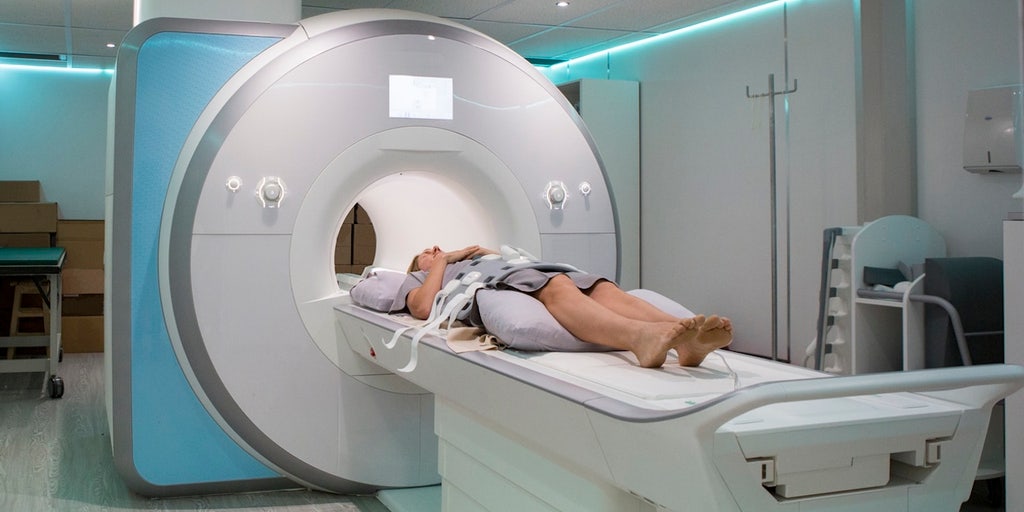Early Detection Through Advanced Imaging Technology
In an unexpected turn of events, Mary Ann Waldron’s decision to undergo a preventative full-body MRI scan at a SimonMed Imaging facility in August 2023 proved life-saving. Waldron, who was otherwise healthy and without symptoms, was stunned to learn the scan had uncovered a substantial aneurysm near her pancreas. This discovery highlights the invisible dangers that can lurk within us and the critical role that advanced diagnostic tools play in uncovering them, advocating for the wider adoption of such preventive healthcare measures.

The SimonONE scan (pictured) scans the entire body for warning signs of disease without using ionizing radiation. (SimonMed)
The Crucial Role of MRI in Modern Preventative Medicine
The MRI scan that Waldron opted for is at the forefront of a shift towards non-invasive diagnostic techniques in modern medicine. Dr. Brett Osborn, who specializes in neurology and longevity, emphasizes that MRI technology is pivotal due to its ability to provide a detailed internal view of the body without exposing patients to the ionizing radiation typically associated with CT scans. This capability is crucial not only for detecting severe conditions like aneurysms but also for ensuring patient safety during the diagnostic process.

“Full-body scanning, mainly through MRI, presents a significant advancement in modern medicine’s diagnostic capabilities,” a doctor told Fox News Digital. (SimonMed)

Because the MRI scans don’t use ionizing radiation, the test itself is safe, said Sadegi of SimonMed, although the test does have some indirect risks and limitations. (iStock)

Dr. Brett Osborn, a Florida neurologist and longevity expert, said he recognizes the benefits of full-body MRI scans. (Dr. Brett Osborn)

Full-body MRIs are not ideal for screenings for breast cancer, which is best detected by mammography and MRI, experts said. (iStock)
From Diagnosis to Treatment: A Journey to Recovery
Upon identifying the aneurysm, Waldron was quickly referred to a vascular surgeon who performed an embolization procedure. This involved the insertion of titanium wires to seal off the aneurysm, effectively preventing a potentially fatal rupture. Following the surgery, Waldron embarked on a carefully monitored recovery, incorporating regular follow-ups and medical imaging to ensure the stability of the treatment. Her case serves as a compelling endorsement for the benefits of MRI scans in detecting life-threatening conditions early, potentially steering patients towards timely medical interventions that can dramatically alter outcomes.

“These scans can detect abnormalities at an early stage, helping us prolong our lives and certainly the quality of our lives,” said one patient. (iStock)
Advocating for Proactive Health Screening
Waldron’s story is a potent reminder of the importance of proactive health management. She champions the use of full-body MRI scans as a preventative tool that can lead to early detection of critical health issues, which might otherwise remain unnoticed until they become severe. As Waldron resumes her normal activities, including golf and swimming, she remains a vocal advocate for health screenings, sharing her story to educate others about the benefits of proactive scans in maintaining long-term health.
This narrative not only sheds light on the personal impacts of advanced medical imaging but also calls into question the current healthcare paradigms that are more reactive than proactive. As technology advances and the potential for early detection increases, there is a growing dialogue about the need for a shift in healthcare policy to support and promote preventive screening measures.
